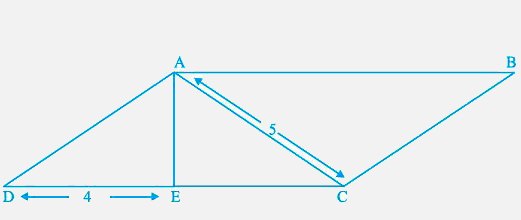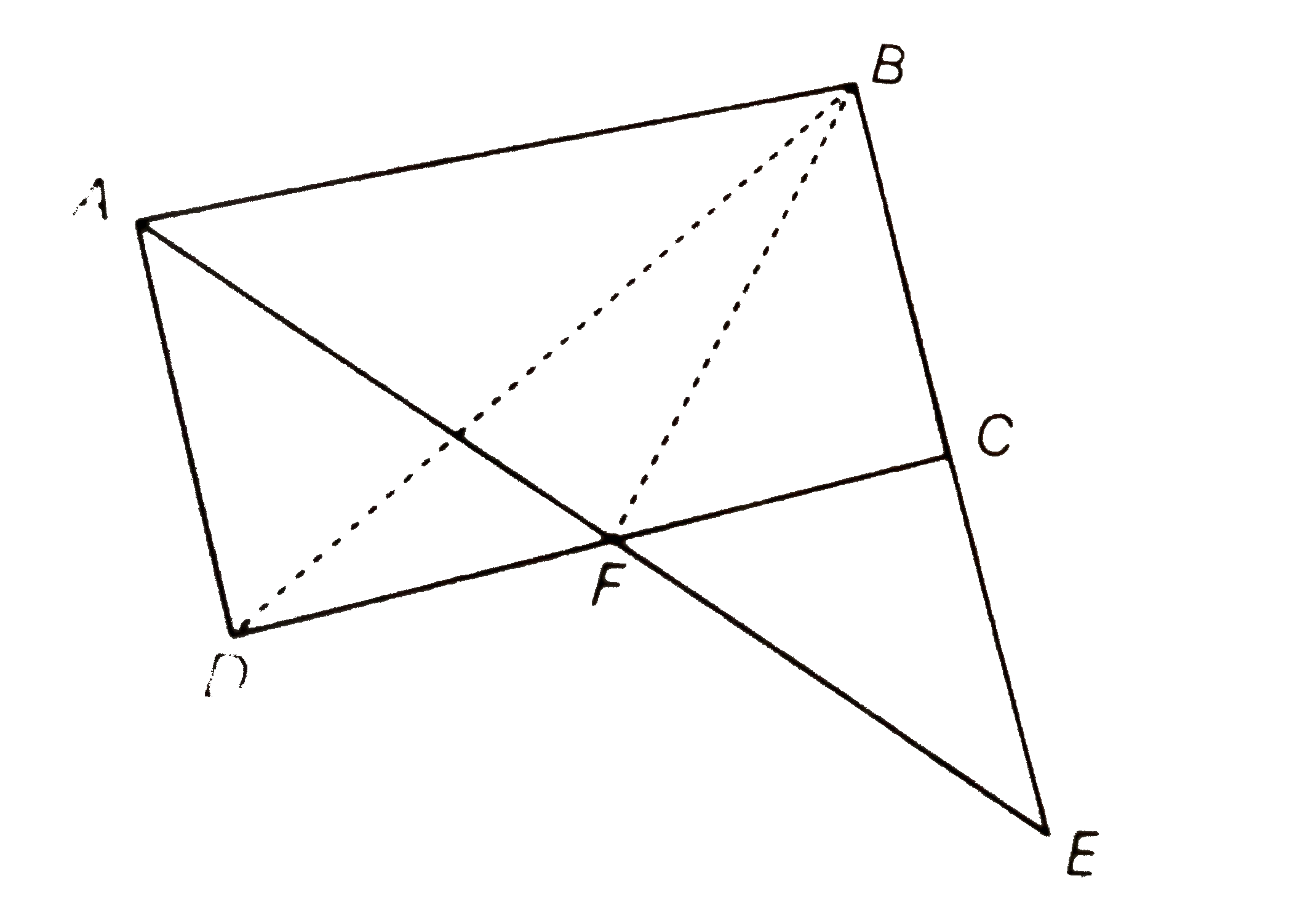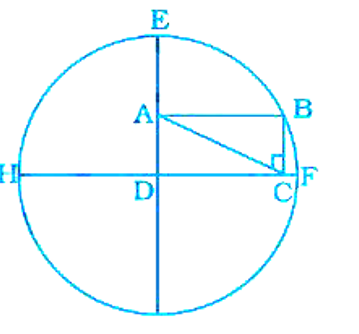ABCD is a parallelogram in which AE is perpendicular to CD (Fig. 9.54). Also AC = 5 cm, DE = 4 cm, and the area of ΔAED=6cm2 . Find the perimeter and area of ABCD.

Step by step video & image solution for ABCD is a parallelogram in which AE is perpendicular to CD (Fig. 9.54). Also AC = 5 cm, DE = 4 cm, and the area of DeltaAED = 6 cm^2 . Find the perimeter and area of ABCD. by Maths experts to help you in doubts & scoring excellent marks in Class 7 exams.
Updated on:21/07/2023Similar Questions
ABCD is a Parallelogram. AE is perpendicular on DC and CF is perpendicular on AD. If AB= 10cm, AE = 8cm, CF =12cm . Find AD ?
View SolutionABCD is a parallelogram in which BC is produced to E such that CE = BC. AE intersects CD at F.

If ar(ΔDFB)=3cm2, then find the area of the parallelogram ABCD.
View Solution
Knowledge Check
In a trapezium ABCD, AB is a parallel to CD. BD is perpendicular to AD. AC is perpendicular to BC. If AD=BC=15cmandAB=25cm, then the area of the trapezium is :
A192cm2B232cm2C172cm2Dnone of the aboveIn figure, ABCD is a parallelogram, AE⊥DC and CF⊥AD. If AD = 12 cm, AE = 8 cm and CF= 10 cm find CD.
 A17 cmB12 cmC10 cmD15 cm
A17 cmB12 cmC10 cmD15 cmIn a trapezium ABCD, AB is a parallel to CD. BD is perpendicular to AD. AC is perpendicular to BC. If AD=BC=15cmandAB=25cm, then the area of the trapezium is :
A192cm2B232cm2C172cm2Dnone of these
If area of Parallelogram ABCD is 80cm2 Find the area of ΔAPD.

View SolutionIn the given fig. AP = 4 cm, BQ = 6 cm and AC = 9 cm. Find the semi perimeter of ΔABC.

View SolutionRectangle ABCD is formed in a circle as shown in Fig. 9.12. If AE = 8 cm and AD = 5 cm, find the perimeter of the rectangle.

View SolutionABCD is a parallelogram in which AB=9.5 cm and its perimeter is 30 c. Find the length of each side of the parallelogram.
View SolutionABCD is a trapezium in which AB || DC, ABデ78 cm, CD = 52 cm. AD = 28 cm and BC =30cm . Find the area of the trapezium.
View Solution
